The Future of Global Sourcing Unveiled
Indonesia is a country that is poised to become a major player in the global sourcing industry. With a growing economy, favorable policy framework, and a rapidly developing infrastructure, Indonesia is becoming an increasingly attractive destination for businesses looking to source products and services. This article will explore the future of global sourcing in Indonesia, including its role in the industry, economic landscape, labor market dynamics, and industries poised for growth.
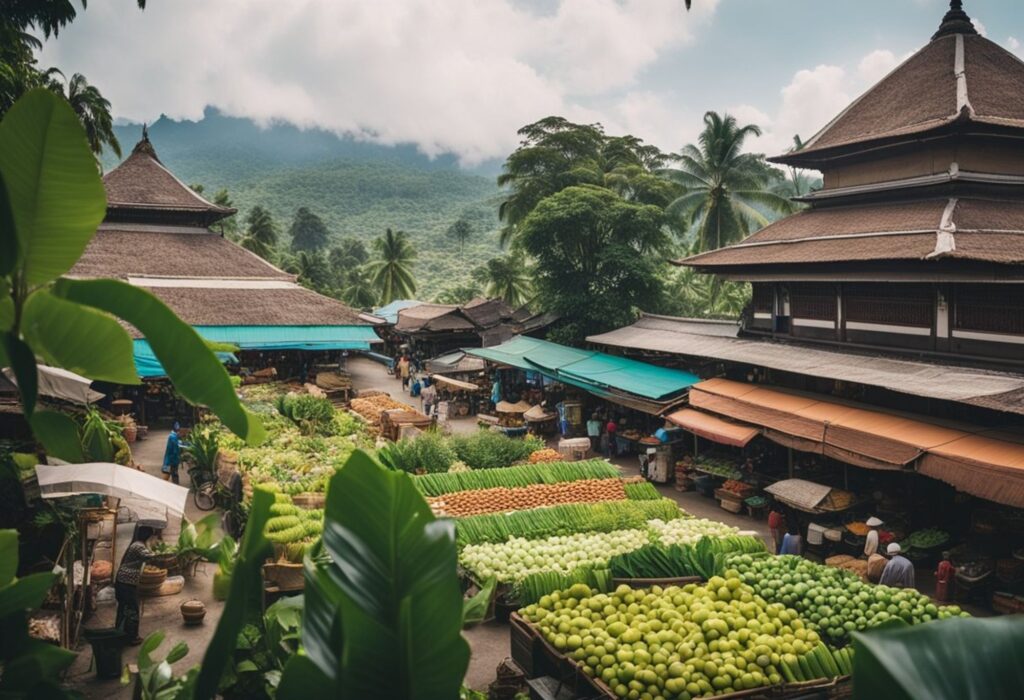
Indonesia’s Role in Global Sourcing Indonesia is emerging as a key player in the global sourcing industry, thanks to its strategic location, favorable policy framework, and growing economy. As a member of the ASEAN Economic Community, Indonesia is well-positioned to take advantage of the region’s growing trade and investment opportunities. Additionally, the country’s large and diverse population offers a wealth of talent and resources that can be leveraged by businesses looking to source products and services.
Key Takeaways
- Indonesia is poised to become a major player in the global sourcing industry.
- The country’s favorable policy framework and growing economy make it an attractive destination for businesses.
- Indonesia’s strategic location and diverse population offer a wealth of opportunities for businesses looking to source products and services.
Indonesia’s Role in Global Sourcing
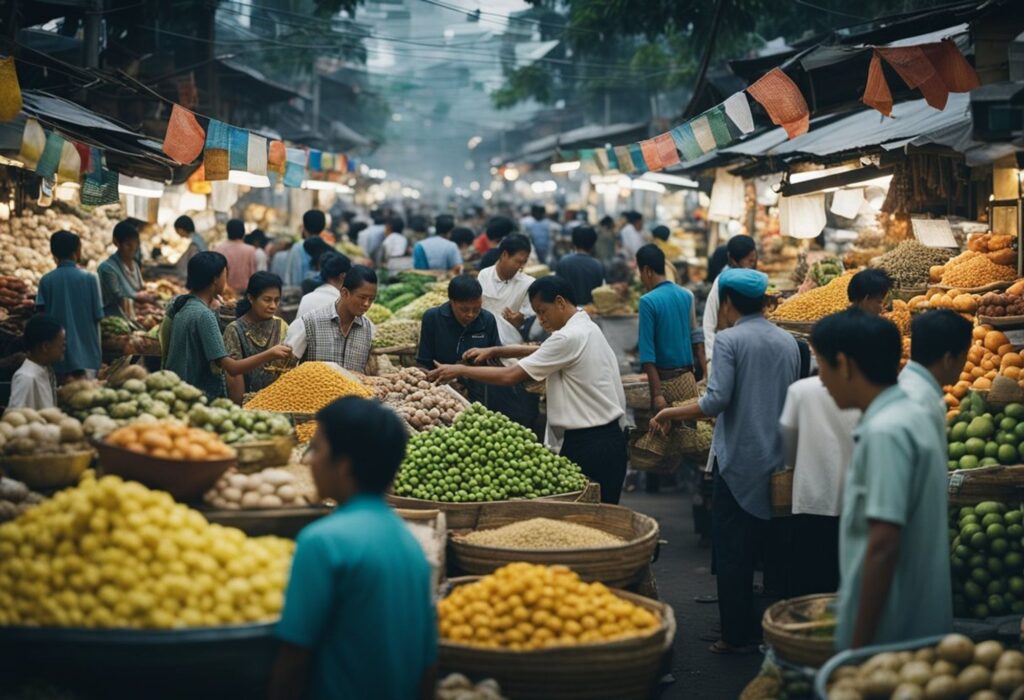
Indonesia has become an increasingly important player in the global sourcing industry due to its growing manufacturing sector and abundant natural resources. The country’s strategic location in Southeast Asia, with access to major shipping lanes, has also made it an attractive destination for international businesses.
Indonesia’s manufacturing sector has experienced significant growth in recent years, with the country recently becoming the 10th largest manufacturing nation globally. The sector accounts for around 20% of Indonesia’s GDP and employs over 25 million workers. Foreign direct investment into Indonesia’s manufacturing sector grew by 52% in 2022 to around $497.7 billion 1.
Indonesia’s natural resources, including minerals, oil, and gas, have also made it a key player in the global sourcing industry. The country is the world’s largest producer of palm oil, a key ingredient in many consumer products, and is also a major producer of rubber, coffee, and cocoa 2.
In addition to its manufacturing and natural resources, Indonesia’s government has implemented policies to attract foreign investment and promote economic growth. The country has implemented a series of economic reforms, including tax incentives and deregulation, to make it easier for businesses to operate in the country 3.
Overall, Indonesia’s growing manufacturing sector, abundant natural resources, and favorable government policies have made it an increasingly important player in the global sourcing industry. With its strategic location and competitive advantages, Indonesia is well-positioned to continue its growth and attract more international businesses in the future.
Economic Landscape and Policy Framework
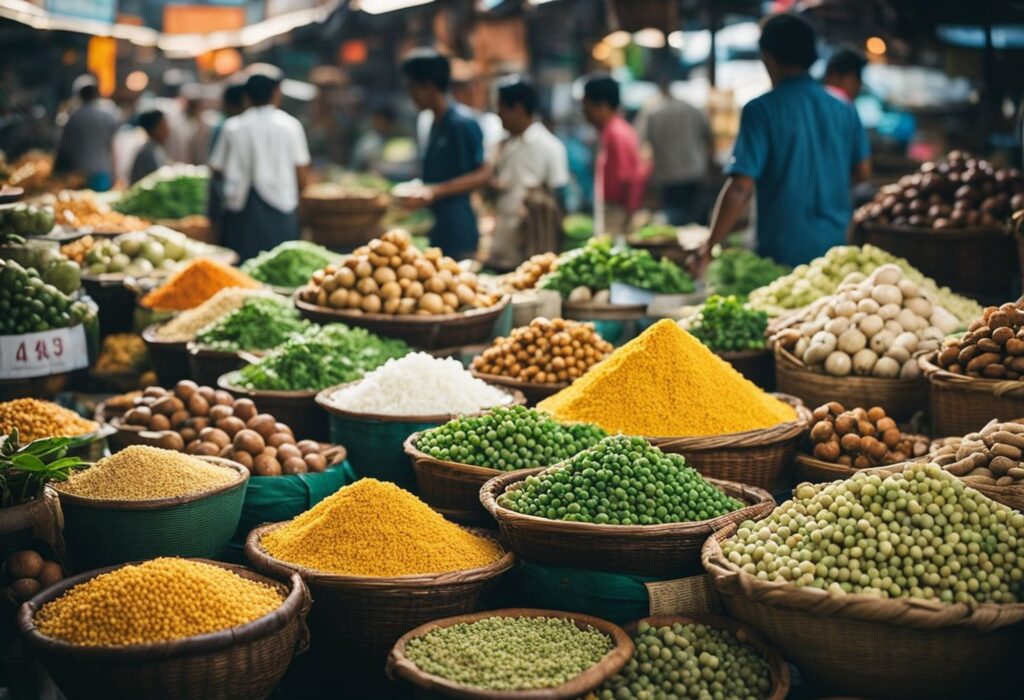
Indonesia has a rapidly growing economy and is considered a prime destination for global sourcing. The country has a diverse economy with a mix of agriculture, manufacturing, and service sectors. The government has implemented various policies and initiatives to attract foreign investment and promote economic growth.
Government Initiatives and Incentives
The Indonesian government has implemented various initiatives and incentives to attract foreign investment. The country offers tax incentives, such as a tax holiday for new investors, and has established special economic zones to encourage investment in specific sectors. The government has also implemented a one-stop service center to streamline the process of starting a business in Indonesia.
In addition, the government has implemented policies to promote the growth of small and medium-sized enterprises (SMEs). The government has established a credit guarantee program to provide financing for SMEs, and has implemented policies to improve access to financing and reduce bureaucratic red tape.
Economic Growth and Stability
Indonesia has experienced steady economic growth over the past decade, with an average annual growth rate of around 5%. The country’s GDP reached $1.1 trillion in 2020, making it the largest economy in Southeast Asia.
The Indonesian government has implemented policies to promote economic stability, such as inflation targeting and a flexible exchange rate regime. The country’s inflation rate has remained relatively stable over the past decade, with an average annual inflation rate of around 3%.
In addition, Indonesia has a young and growing population, with a median age of around 30 years old. This demographic advantage provides a large and growing consumer base, as well as a source of skilled labor.
Overall, Indonesia’s economic landscape and policy framework make it an attractive destination for global sourcing. The government’s initiatives and incentives, coupled with the country’s steady economic growth and stability, provide a favorable environment for businesses looking to expand their operations in the region.
Infrastructure Development
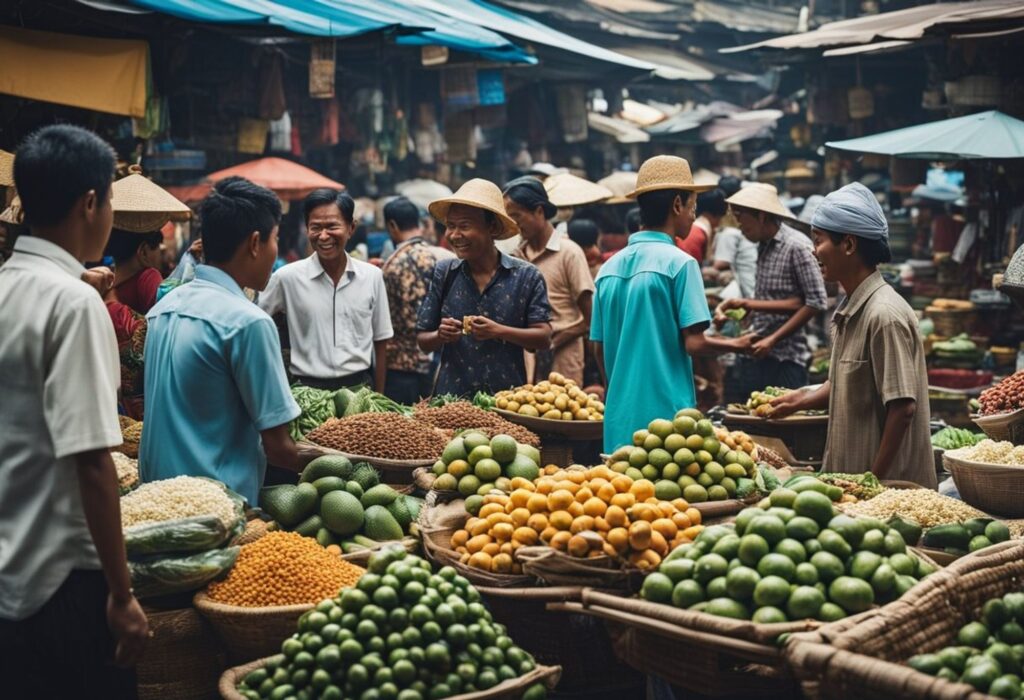
Indonesia has set a strategic course to reduce its dependence on coal and embrace cleaner, alternative energy sources. With an estimated 400 gigawatts of technical potential in green energy, Indonesia is projected to rise as Southeast Asia’s leading green energy powerhouse. The government has allocated 365.8 trillion Indonesian rupiah for infrastructure projects in 2022, which is 50 trillion Indonesian rupiah less compared to the 2021 allocation.
Logistics and Connectivity
Infrastructure is a key sector in supporting the country’s development plan, and given Indonesia’s archipelagic nature, connectivity and innovation will accelerate economic growth. According to the National Development Planning Agency (Bappenas), national logistics costs decreased significantly from 23.8% in 2018 to 14.29% in 2022. In the Global Competitiveness Index for the infrastructure sector by IMD, Indonesia’s ranking has improved from 54 in 2014 to the current position of 51. Infrastructure projects also create jobs.
Technological Advancements
Indonesia is upgrading the overall infrastructure, positively influencing the living conditions of Indonesians with a special emphasis on the country’s diverse geography (being a multi-island state) and rapidly growing population. The country has made significant progress in the development of e-infrastructure, which is expected to create new opportunities in the infrastructure sector. According to S-GE, Indonesia’s e-infrastructure sector is projected to grow at a CAGR of 17.3% from 2019 to 2023. The growth is driven by the increasing demand for digital services and the government’s push to develop the country’s digital economy.
In conclusion, Indonesia’s infrastructure development is on the rise, and the country is making significant progress in logistics and connectivity as well as technological advancements. As a result, Indonesia is poised to become a major player in the global sourcing market.
Labor Market Dynamics
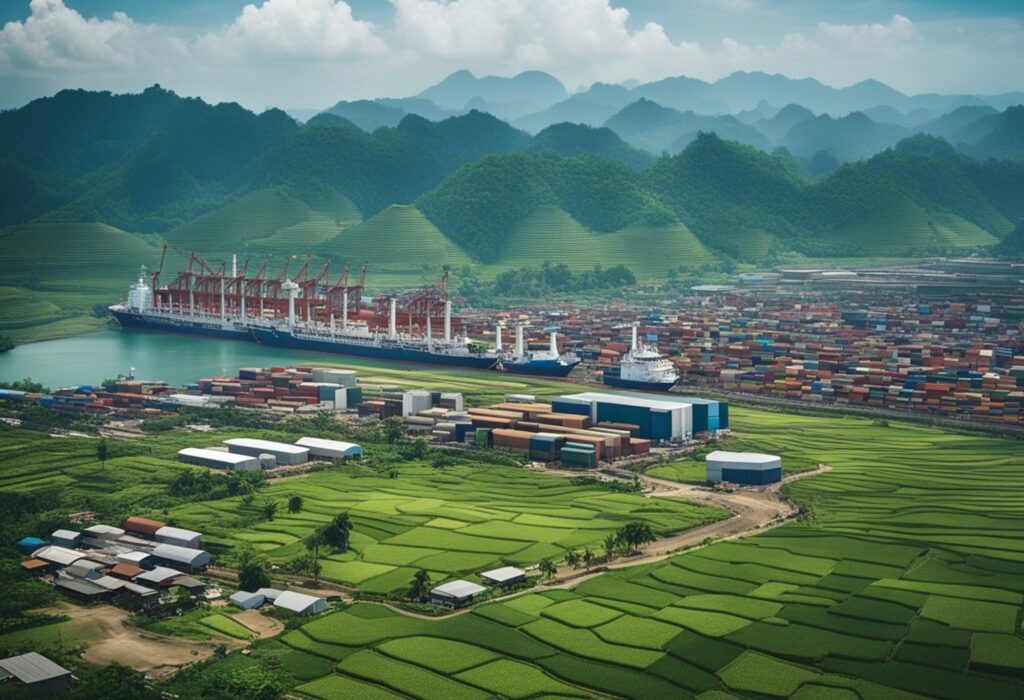
Indonesia’s labor market is characterized by a large, young, and growing workforce. According to the World Bank, Indonesia’s labor force is expected to reach 164 million by 2045, making it the world’s fourth-largest labor force. However, Indonesia’s labor market is facing several challenges, including employment quality, skills shortages, and labor productivity.
Workforce Skills and Education
One of the major challenges facing Indonesia’s labor market is the skills gap. While Indonesia’s education system has improved significantly in recent years, many employers still report difficulty finding workers with the right skills. This is particularly true in the manufacturing sector, where employers often require workers with technical skills.
To address this challenge, the Indonesian government has implemented several initiatives to improve workforce skills and education. For example, the government has launched vocational education and training programs to provide workers with the skills they need to succeed in the labor market. Additionally, the government has established partnerships with the private sector to develop training programs that are tailored to the needs of specific industries.
Labor Costs and Productivity
Another challenge facing Indonesia’s labor market is the issue of labor costs and productivity. Labor costs in Indonesia are relatively low compared to other countries in the region, which has made Indonesia an attractive destination for foreign investors. However, low labor costs have also been a barrier to improving labor productivity, as employers have little incentive to invest in new technologies or training programs.
To address this challenge, the Indonesian government has implemented several policies to improve labor productivity. For example, the government has launched initiatives to promote the use of technology in the manufacturing sector, such as the Industry 4.0 roadmap. Additionally, the government has implemented labor market reforms to improve working conditions and increase compliance with labor regulations.
Overall, Indonesia’s labor market is facing several challenges, but the government is taking steps to address these issues and improve the quality of employment for workers. By investing in workforce skills and education, and promoting labor productivity, Indonesia has the potential to become a major player in the global sourcing industry.
Industries Poised for Growth
Indonesia is one of the fastest-growing economies in Southeast Asia, with a large and young population, abundant natural resources, and a strategic location between the Pacific and Indian Oceans. As the country continues to develop, several industries are poised for significant growth in the coming years. In this section, we will explore two of the most promising sectors: Manufacturing and Digital and IT Services.
Manufacturing Sector
Indonesia’s manufacturing industry is one of the key drivers of the country’s economic growth, contributing 16.1% to Indonesia’s GDP in the third quarter of 2022 [1]. The government of Indonesia is committed to developing the manufacturing sector, with a goal of making the country a global manufacturing hub by 2030 [2]. The following table shows the top five manufacturing industries in Indonesia by value of output in 2023 [2].
| Industry | Output (USD billion) |
|---|---|
| Food and Beverages | 103.5 |
| Textiles and Garments | 38.2 |
| Automotive | 36.1 |
| Chemicals | 33.3 |
| Electronics | 30.2 |
As the table shows, the food and beverages industry is the largest manufacturing sector in Indonesia, followed by textiles and garments, automotive, chemicals, and electronics. However, other industries such as pharmaceuticals, medical devices, and renewable energy are also expected to grow in the coming years [1].
Digital and IT Services
Indonesia is also emerging as a hub for digital and IT services, driven by a large and young population, rising internet penetration, and a supportive government policy. The country’s digital economy is expected to reach USD 124 billion by 2025, up from USD 44 billion in 2020 [3]. The following table shows the top five digital services in Indonesia by value of output in 2020 [3].
| Service | Output (USD billion) |
|---|---|
| E-commerce | 32 |
| Online media and advertising | 7 |
| Online travel | 4 |
| Ride-hailing and food delivery | 3 |
| Digital financial services | 2 |
As the table shows, e-commerce is the largest digital service in Indonesia, followed by online media and advertising, online travel, ride-hailing and food delivery, and digital financial services. However, other services such as healthtech, edtech, and agritech are also expected to grow in the coming years [3].
In conclusion, Indonesia’s manufacturing and digital sectors are poised for significant growth in the coming years, driven by a supportive government policy, abundant natural resources, and a large and young population. Investors and businesses looking to enter these sectors should closely monitor the latest developments and opportunities in Indonesia.
Challenges and Risks

Political and Regulatory Risks
Indonesia’s political and regulatory environment poses significant challenges and risks to global sourcing. The country’s complex bureaucracy, corruption, and weak rule of law can lead to delays, increased costs, and legal disputes. Additionally, the government’s protectionist policies, such as import restrictions and local content requirements, can limit access to foreign suppliers and increase costs for businesses.
To mitigate these risks, companies should conduct thorough due diligence on potential suppliers and partners, establish strong relationships with local authorities, and stay informed about changes in regulations and policies. It is also essential to have a contingency plan in place to address any unforeseen political or regulatory disruptions.
Supply Chain Vulnerabilities
Indonesia’s geography and infrastructure present significant challenges to global sourcing. The country’s vast archipelago and limited transportation networks can lead to supply chain disruptions, delays, and increased costs. Additionally, natural disasters such as earthquakes, tsunamis, and floods can cause significant damage to infrastructure and disrupt supply chains.
To address these vulnerabilities, companies should establish robust risk management strategies, diversify their supplier base, and invest in supply chain resilience. This can include developing alternative transportation routes and modes, establishing local warehouses and distribution centers, and implementing advanced technologies such as predictive analytics and blockchain.
Overall, while global sourcing in Indonesia offers significant opportunities, it also poses significant challenges and risks. Companies that can effectively navigate these challenges and mitigate these risks are well-positioned to succeed in this dynamic and rapidly evolving market.
Case Studies of Successful Sourcing
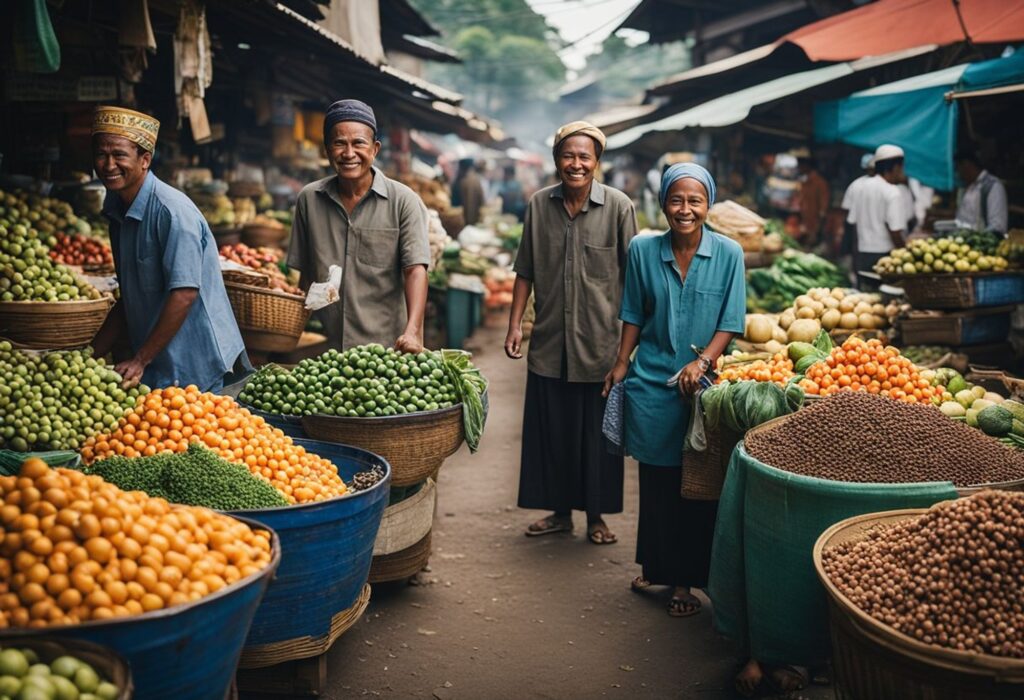
Foreign Investment Success Stories
Indonesia has been an attractive destination for foreign investors due to its large population, abundant natural resources, and strategic location. Many multinational companies have successfully established their presence in Indonesia and leveraged its resources to grow their business. One such example is IKEA, which has been sourcing products from Indonesia since the 1980s. The Swedish furniture giant has established a long-term partnership with local suppliers and has invested in their development to ensure the quality of their products. This has not only helped IKEA to reduce its costs but also created employment opportunities in Indonesia.
Another success story is Unilever, which has been operating in Indonesia for over 80 years. The company has established a strong presence in the country by investing in local talent and resources. Unilever has also been actively involved in community development projects, which have helped it to build a positive reputation in the country. As a result, the company has been able to maintain its market leadership position and grow its business in Indonesia.
Local Enterprises Going Global
Indonesia has a large number of local enterprises that have successfully expanded their business overseas. One such example is PT. GarudaFood Putra Putri Jaya, which has become a leading snack food manufacturer in Southeast Asia. The company has been able to expand its business by leveraging its competitive advantage in product innovation and quality. GarudaFood has also been actively involved in social and environmental initiatives, which have helped it to build a positive reputation in the region.
Another success story is PT. Kalbe Farma Tbk, which is one of the largest pharmaceutical companies in Southeast Asia. The company has been able to expand its business overseas by leveraging its strong research and development capabilities and its ability to adapt to local market conditions. Kalbe Farma has also been actively involved in community development projects, which have helped it to build a strong brand image in the region.
In conclusion, Indonesia has been a successful destination for global sourcing due to its abundant resources and strategic location. Both multinational companies and local enterprises have been able to leverage these advantages to grow their business and expand their presence overseas.
Strategic Considerations for Businesses
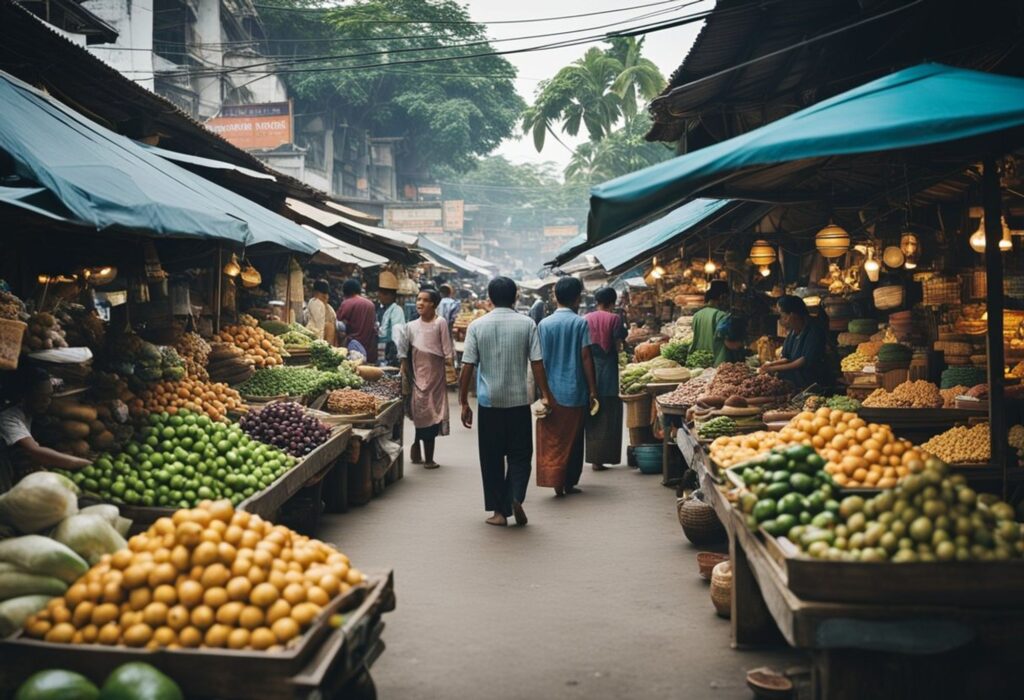
When it comes to global sourcing, businesses need to consider a range of strategic factors to ensure success. This section will highlight two key considerations: cultural competence in business and long-term strategic partnerships.
Cultural Competence in Business
Cultural competence is a critical factor when doing business in Indonesia. This includes an understanding of cultural norms, values, and customs. Failure to understand these cultural nuances can lead to misunderstandings and miscommunications, which can damage business relationships.
To overcome these challenges, businesses should invest in cultural training for their employees. This will help them understand the local culture and build stronger relationships with their Indonesian counterparts. Additionally, businesses should consider hiring local staff who can provide valuable insights into the local culture.
Long-term Strategic Partnerships
Building long-term strategic partnerships is essential for businesses looking to succeed in Indonesia. This involves finding reliable suppliers and building strong relationships with them over time. This can help businesses secure better prices, improve quality control, and ensure a steady supply of goods.
To build these partnerships, businesses should invest time in building relationships with their suppliers. This involves regular communication, face-to-face meetings, and a willingness to work collaboratively to solve problems. Additionally, businesses should consider offering incentives to their suppliers, such as long-term contracts or volume commitments.
In conclusion, businesses looking to succeed in Indonesia must consider a range of strategic factors, including cultural competence and long-term strategic partnerships. By investing in these areas, businesses can build strong relationships with their Indonesian counterparts and secure a reliable supply of goods.
Frequently Asked Questions
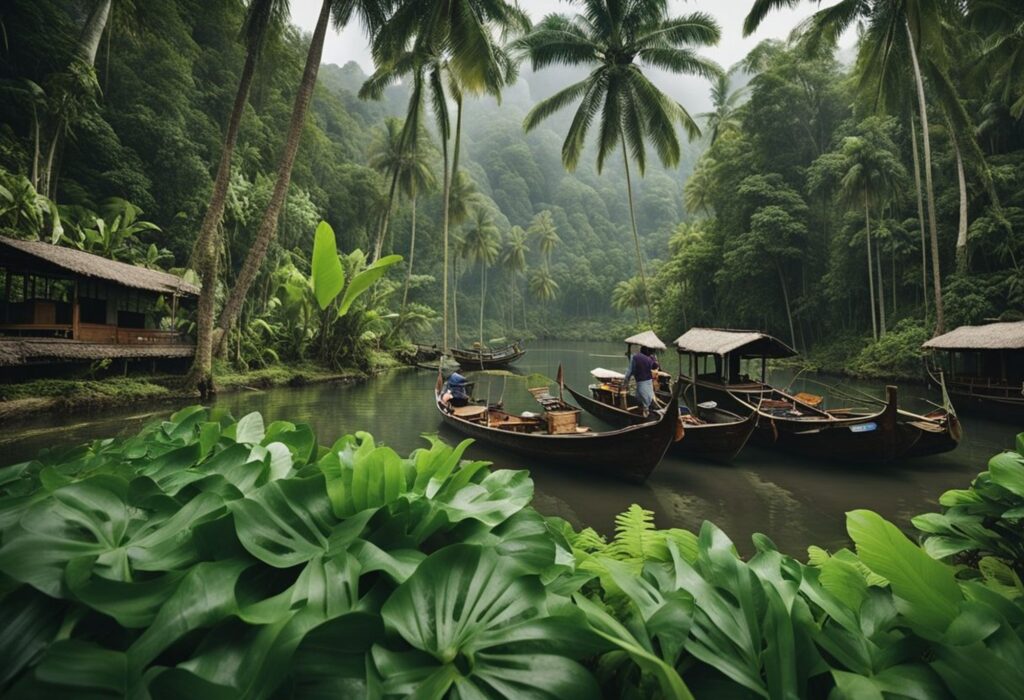
What products are predominantly manufactured in Indonesia?
Indonesia has a diverse manufacturing industry, with a wide range of products being manufactured. However, some of the most significant industries in Indonesia include textiles, automotive, electronics, and food and beverages. The country is also known for its production of furniture, rubber products, and chemicals.
Which are the leading manufacturing companies in Indonesia?
Indonesia is home to many leading manufacturing companies, including PT Astra International Tbk, Unilever Indonesia Tbk, and PT Indofood Sukses Makmur Tbk. Other major players in the Indonesian manufacturing industry include PT Bank Mandiri Tbk, PT Bank Rakyat Indonesia Tbk, and PT Telekomunikasi Indonesia Tbk.
What are the key statistics that define Indonesia’s manufacturing industry?
Indonesia’s manufacturing industry is a significant contributor to the country’s economy, accounting for around 20% of the country’s GDP. The industry has experienced steady growth over the past few years, with an average annual growth rate of around 4.5%. The country is the fourth most populous country in the world and has a young and growing workforce, which is a significant advantage for the manufacturing industry.
What factors could potentially cause a decline in Indonesia’s role in global manufacturing?
Indonesia’s manufacturing industry faces several challenges, including a lack of infrastructure, a shortage of skilled workers, and a complex regulatory environment. Additionally, the country’s manufacturing industry is heavily reliant on imported raw materials, which can make it vulnerable to fluctuations in global commodity prices.
What challenges does Indonesia face in managing its supply chain logistics?
Indonesia’s geography presents several challenges for managing its supply chain logistics. The country is made up of more than 17,000 islands, which can make transportation and logistics challenging. Additionally, the country’s infrastructure is still developing, which can lead to delays and higher costs.
How does Indonesia’s geographical location benefit its manufacturing sector?
Indonesia’s geographical location is strategically positioned for trade with other countries in the region. The country has access to major shipping lanes, making it an ideal location for manufacturing and exporting goods. Additionally, the country’s proximity to major markets in Asia, including China and India, makes it an attractive location for companies looking to expand their manufacturing operations.
Explore the Future of Global Sourcing with Buyamia in Indonesia!
Dive into the vibrant world of Indonesian markets and discover why it’s becoming the go-to destination for global sourcing. Learn about emerging trends, top suppliers, and how to leverage Indonesia’s rich resources for your business. Click here to explore Buyamia’s guide and stay ahead in the global sourcing game!
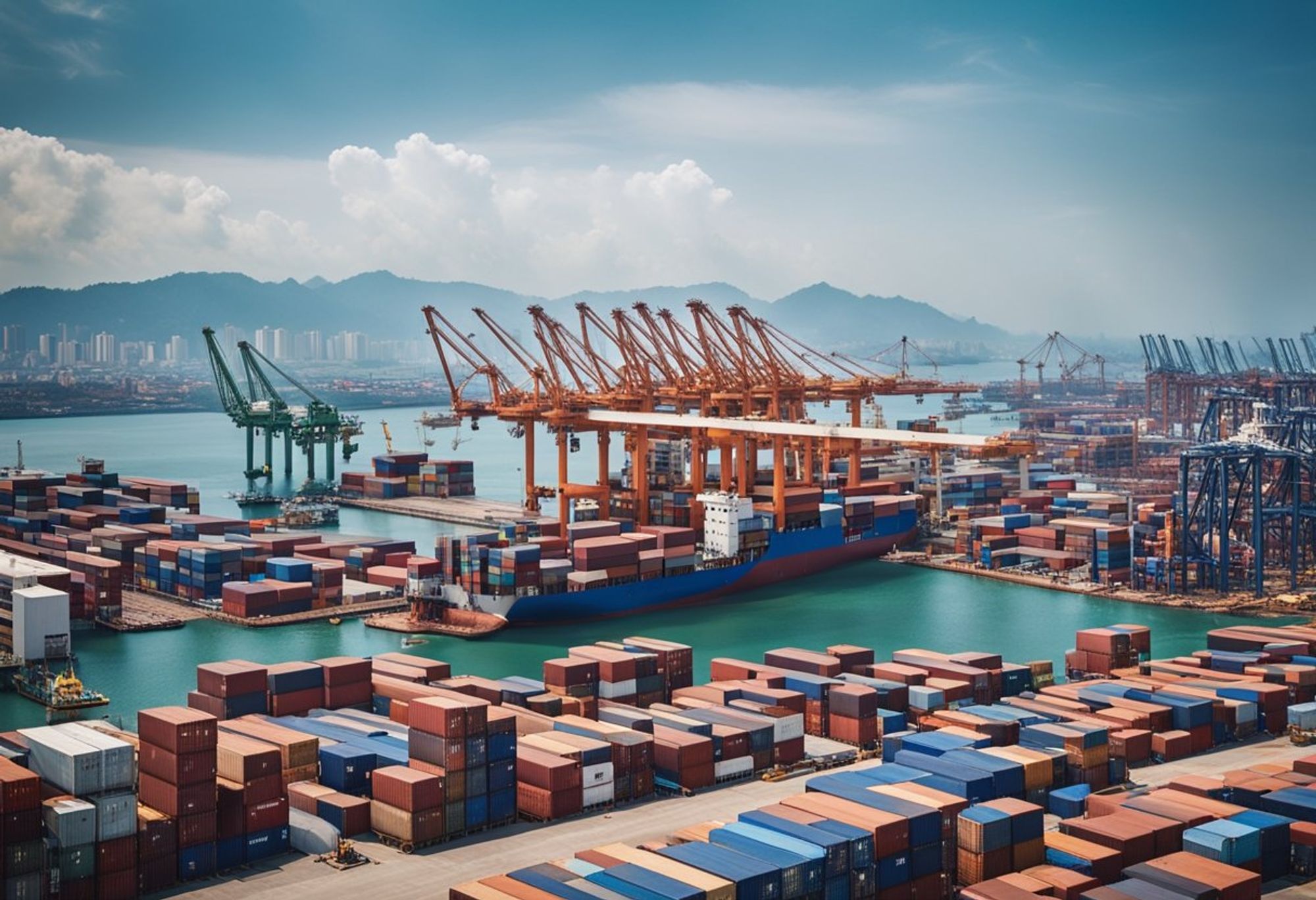
Leave a Reply